Killing Floor 2 exclusive first look: co-op FPS horror with the most advanced gore system ever
MEAT and bones
Bullets, blades, and blood: these are the pillars of KF2. They're represented by a diagram like the classic food pyramid, except each ingredient gets an equal share. The pyramid sprouts guns and blades and is coated in blood like a heavy metal porcupine.
"When we started designing the game we decided gore was going to be the most important feature," says David Hensley, art director on Killing Floor 2. "We were really inspired by Soldier of Fortune, the GHOUL system. We wanted to outdo Soldier of Fortune's gore."
Hensley has been with Tripwire since the beginning. He and Munk went to college together. When they moved to Atlanta, they slept on air mattresses in an apartment shared with other members of the studio. He couldn't afford a car until they shipped Red Orchestra.
Hensley uses a pistol to slowly tear apart Cysts. The Cysts are new, weaker Clot variants—the underdeveloped killer babies of the genetic freak family. Each zed in KF2 features 19 points of dismemberment. "You can blow chunks off their head to reveal skull," he says. "Keep shooting the skull and it explodes, revealing brain cross sections. You can cut them in half vertically, horizontally."
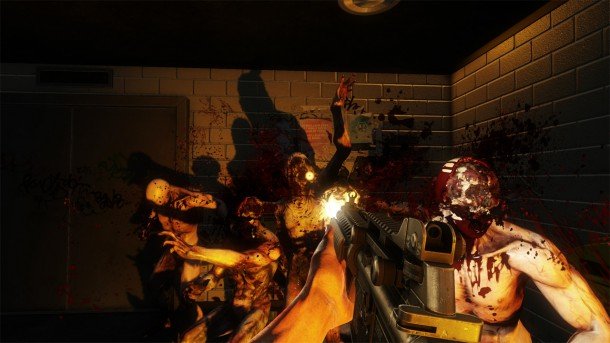
Tripwire calls KF2's gore system MEAT. Massive Evisceration and Trauma. It's more detailed and graphic than Soldier of Fortune's GHOUL system, but it's not as disturbing as seeing realistic human faces blown apart. Killing Floor 2's zeds are genetic freaks pulled from the workshops of schlocky sci-fi horror films; their gruesome dismemberments are designed to elicit cheers rather than grimaces. And it works—every katana appendectomy and mid-air slow-mo headshot puts a grin on my face. These bodies have weight when they fall apart, and they get torn up in all kinds of nasty ways. But Killing Floor 2 is colorful and exaggerated enough to teeter back from the edge of disturbingly realistic violence.
Still, there's enough blood in KF2 to make Sam Raimi envious. And here's the crazy part: it stays. Bloodstains become permanent fixtures of Killing Floor 2 maps for entire matches. Tripwire's designers grin mischievously when I ask how they did it.
The biggest gaming news, reviews and hardware deals
Keep up to date with the most important stories and the best deals, as picked by the PC Gamer team.
"We're using some really clever tricks to modify textures in the level in real time," says Gibson. "Typically blood is rendered as a texture that is projected onto objects in the world. It's very expensive to render. What this is doing, in real-time, is modifying the textures being rendered to display the blood so there's almost no additional rendering cost. You can literally paint the texture with blood and it'll stay the entire match."

For added variety, each zed has 95 death animations divided between kill zones—the head, neck, chest, stomach, and limbs. Thanks to Killing Floor's success, Tripwire had the money to hire a mocap expert and record every zed movement at a motion capture studio in Los Angeles. Munk captured 3000 motion capture clips for the zeds, and melee attacks, and gun reloads. The once-stolid zeds that clunked around like Unreal Tournament bots are now alive, swaying and howling, lunging and beating their chests. Gollum's Andy Serkis would be proud.
Tripwire's guns, already renowned for their realism, also benefit from Killing Floor 2's focus on animation fidelity. "Guns shoot at such a high framerate, if you animate the gun at 30 frames per second, you're only going to get six frames per second when you go into slow-mo to show that gun animating," says Munk. "We started experimenting. What happens if we animate our weapons shooting at ridiculously high framerates? Using the Bullpup as an example, we animated at 242 frames per second, which gives us 22 frames per shell that ejects out of the weapons. In slow-mo you can actually see every kickback."
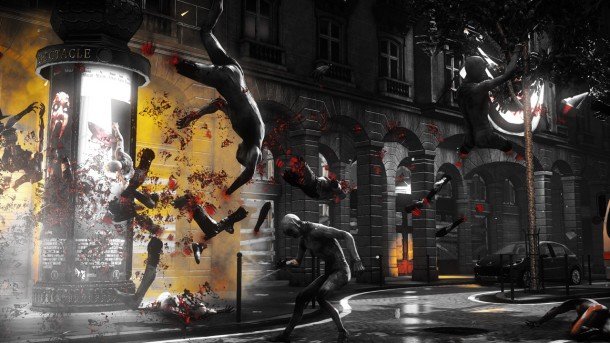
Blood on the streets
Hensley opens up a co-op game lobby—an addition to KF1's classic server browser—which is quickly filled by five Tripwire testers elsewhere in the office. Most of them play with level 25 perks, KF2's new level cap. Two skills unlock every five levels, but only one can be equipped from each pair. There's always a tradeoff. The Commando has to choose between a damage boost and a skill that shows his entire team the zeds' health bars.
The new perk abilities add variety and, more importantly, a longer level curve for players to work on. In KF1, players could go months without earning a rank up, and each perk had only six ranks. "A big goal for us this time around is to make sure the endgame, playing the game for a long time, is much more entertaining and has a lot more replay value," Gibson says.
Hensley starts the match on Hell on Earth, the hardest of four difficulty settings. Tripwire removed one difficulty option from the first game and completely redesigned how difficulty scaling works. In KF1, zeds simply moved faster and soaked up damage like lead-starved bullet sponges. In KF2, zeds become more aggressive and gain new abilities. Clots that would stumble around in a daze on normal charge towards Hensley in a fury when he shoots them on Hell on Earth. Spider-like Crawlers pour out of vents in the walls and ceiling and scurry around in the darkness.
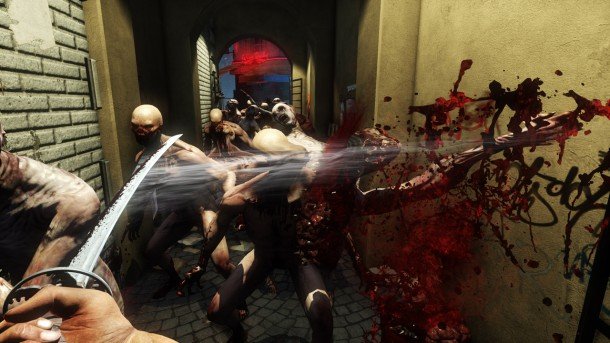
Larger zeds, like the bile puking Bloat and the hulking, spike-handed Fleshpound, can already eat magazines of ammo on normal. I don't see them unleash their full moveset on Hell on Earth, but I expect they'll be more threatening, and more fun to fight, than they are in KF1.
Hensley's team move through the streets of Paris, first killing zeds with pistols, then upgrading to more powerful rifles and shotguns. Each perk has four primary weapons. That's 40 weapons across 10 planned perks, but Tripwire says there will be others—backup melee weapons and "sidegrades" that won't ruin game balance.
The Tripwire players move from the streets of Paris into an abandoned hotel, then out into a dimly lit courtyard and underground into the subway. Hensley pulls out a katana to protect teammates as they reload. Melee has been completely reworked for KF2, with light and heavy attacks, combos, and four-way directional swings. A narrow hallway in the subway becomes clogged with bodies as Clots pour in and fall to concentrated gunfire. When Hensley swings his flashlight over the walls, they're coated with blood.
The team lasts three waves. Without welding doors shut to protect their backs, hordes of zeds overwhelm them. Paris burns on, overrun.
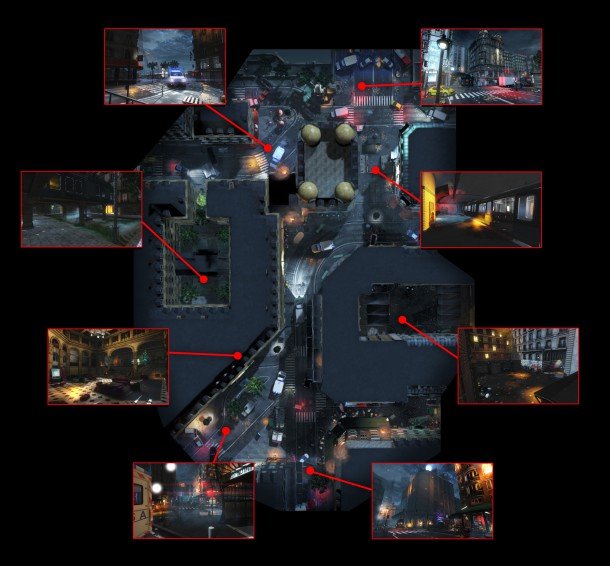
Modders at heart
Killing Floor 2 is still Tripwire's baby. They're raising it, molding it in their image. But eventually, it will become the community's game. "Every system that we make we're looking at how to make it extensible to modders," Hensley says. "We'll design a system and then go 'oh, that's not going to work for modding. So we'll redesign it to make it easier for modders to access."
KF2 will support Steam Workshop for mods. Tripwire will release a mod SDK. "That's one of the things we're very adamant about," Gibson says. "We like to prod DICE and EA on this one occasionally. They've essentially come out and said that games have progressed to the point [that they] don't believe the community can make content for [their] games. I say that's total BS. People are smart. That's selling them short. They will figure out their tools. If we can do it, smart kids out there are going to figure it out too."
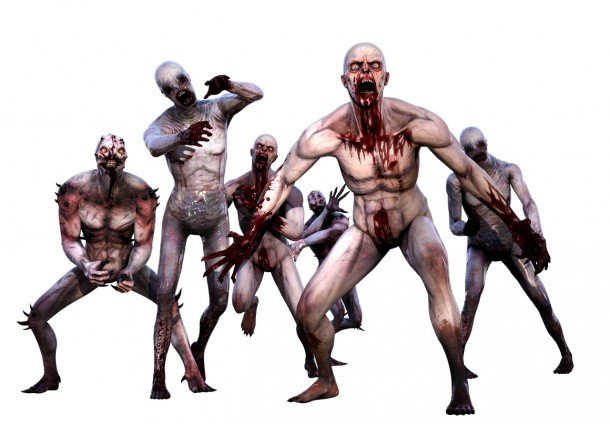
The gore and animation systems will be extremely open to modders. Limbs and damage types can easily be assigned different effects. Zeds could spew flowers and rainbows instead of blood. Modders will be able to assign zeds new attacks without writing any code. Even Tripwire's lighting system, which is they built themselves and integrated into Unreal Engine 3, will be easy to animate.
The fans still playing Killing Floor years after its release made Killing Floor 2 possible. Those are the people Tripwire wants to reach through Early Access, to get their feedback on weapon and perk balance. Bill Munk, most of all, seems like he can't wait to get Killing Floor 2 into the hands of fans. At the same time, he's putting everything he's got into it.
"When we first started, we didn't have two pennies we could scrape together, but we've always been really ambitious," Munk says. "It's our goal to have one of the coolest video game companies in the world, an oasis, a place kind of like Valve, where we make stuff that would never exist if we didn't exist. But we've had to bleed to get to that. ... Now I feel like, for me, this moment is what I've worked towards for 10 years since we first started. We have a full crew of elite professionals, we all know each other really good. We all know how to use the engine. We all believe in this game. I'll do whatever it takes to make this product as sick as possible."
This reveal of Killing Floor 2 is the first part of our coverage of Tripwire's new co-op shooter. Subscribers to the US version of the magazine will receive an exclusive PC Gamer character skin in Issue #254 . Come back tomorrow for an in-depth look at Tripwire's approach to weapon design and an interview with president John Gibson.

Wes has been covering games and hardware for more than 10 years, first at tech sites like The Wirecutter and Tested before joining the PC Gamer team in 2014. Wes plays a little bit of everything, but he'll always jump at the chance to cover emulation and Japanese games.
When he's not obsessively optimizing and re-optimizing a tangle of conveyor belts in Satisfactory (it's really becoming a problem), he's probably playing a 20-year-old Final Fantasy or some opaque ASCII roguelike. With a focus on writing and editing features, he seeks out personal stories and in-depth histories from the corners of PC gaming and its niche communities. 50% pizza by volume (deep dish, to be specific).

